May 1, 2025

Why WindNext?
WindNext team started thinking about new ways to generate wind power while seeing the challenges of building existing systems. It is often hard to place wind farms in existing landscape, as the locations with good wind conditions are rare. The local population is also often against new wind farms due to the annoying infrasound and the deadly effect they can have on the local bird populations. The wind turbines themselves are also not very green - they last only 20 years and the giant fiberglass blades are almost impossible to recycle.
What if there was a way to build wind farms in a new way? One that would unlock new potential locations and eliminate the unwanted effect on human and bird populations? That would last longer and be fully recycleable?
Challenges of legacy wind power technology
With increased focus on renewable energy sources, investment in wind power and installed capacity is growing steadily. To maximise efficiency, wind turbines keep growing. That makes them ever harder to install, limiting the number of potential locations. Traditional rotor blades are also made of extremely difficult to recycle fiberglass and are usually discarded as waste at landfills or incinerated.. The current approach is suitable only for flat areas with a lot of space for installation. With most of that space in use by human dwellings or agriculture, we are nearing capacity for traditional wind farms despite billions of euros in funds earmarked for expansion of wind power in the future.
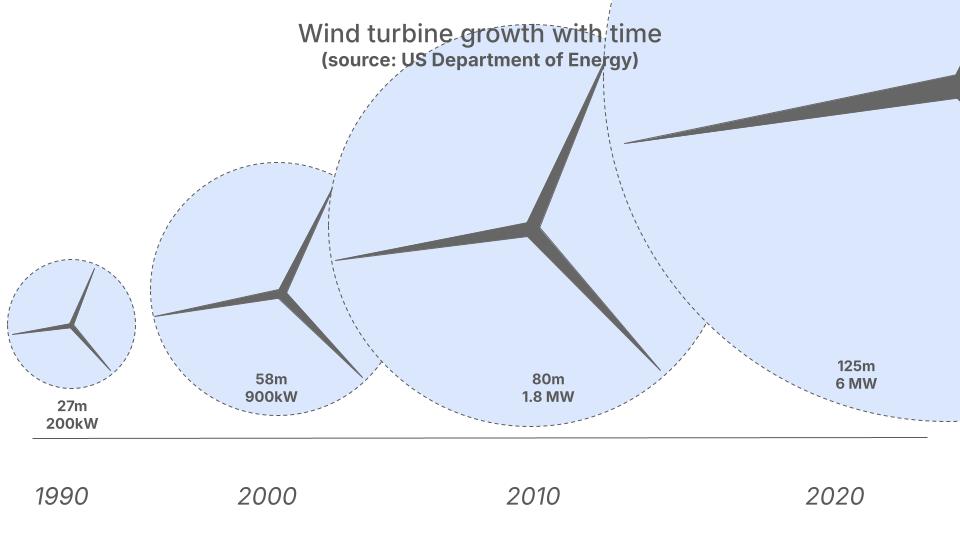
Designed for hills
WindNext modules are designed for ease of manufacture, with over 95% of the module (everything except the electrical subsystem) comprising only four essential parts (hoop modules, crossbar holders, shroud envelope parts and blades). Dimensions of basic elements have been optimised for size, with the biggest segment measuring at 1.5m wide, 11.3m long, 2.2m high and weighs 2.3 tonnes.
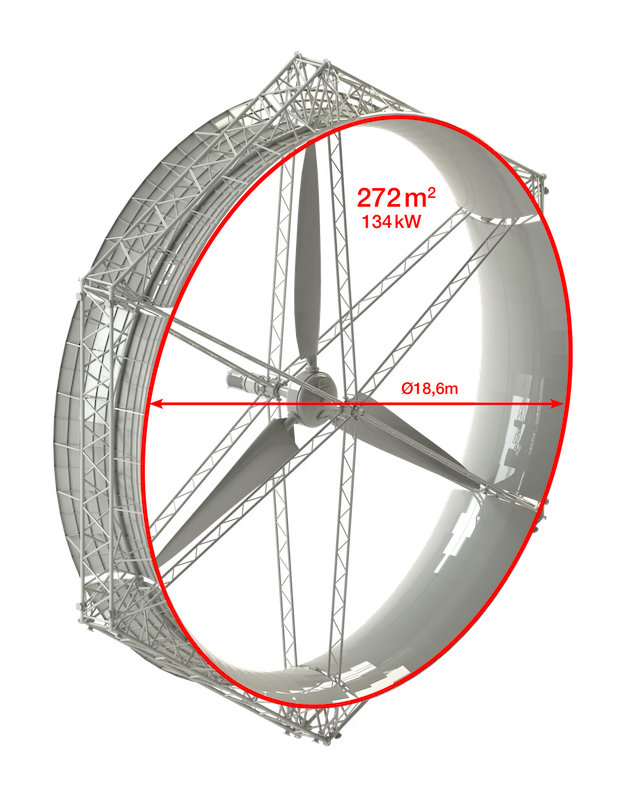
The modular design of the WindNext turbine significantly lowers the costs of transportation, soil work, installation, documentation and operation. As there is less material, smaller trucks and cranes can be used. The module also requires smaller foundations, leading to faster processing of planning permission.
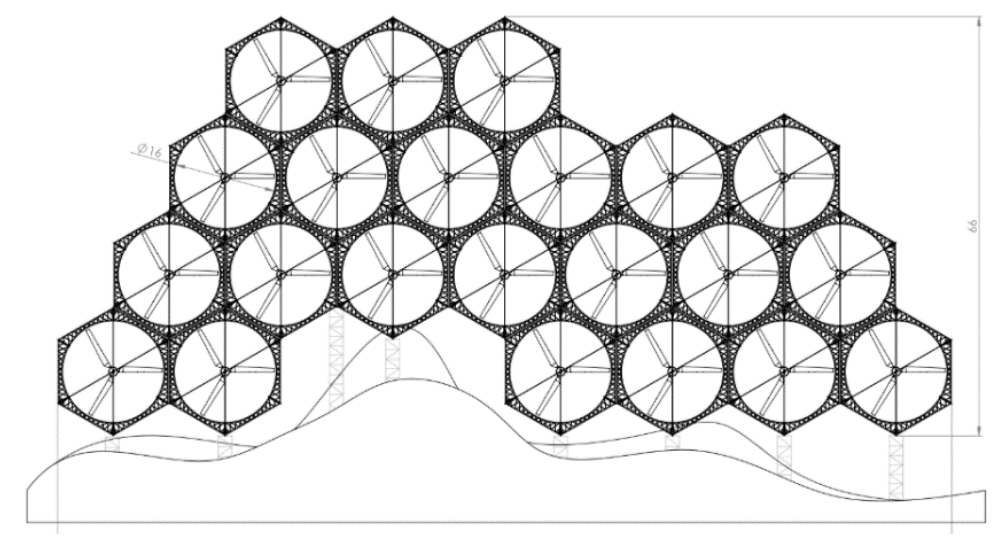 |
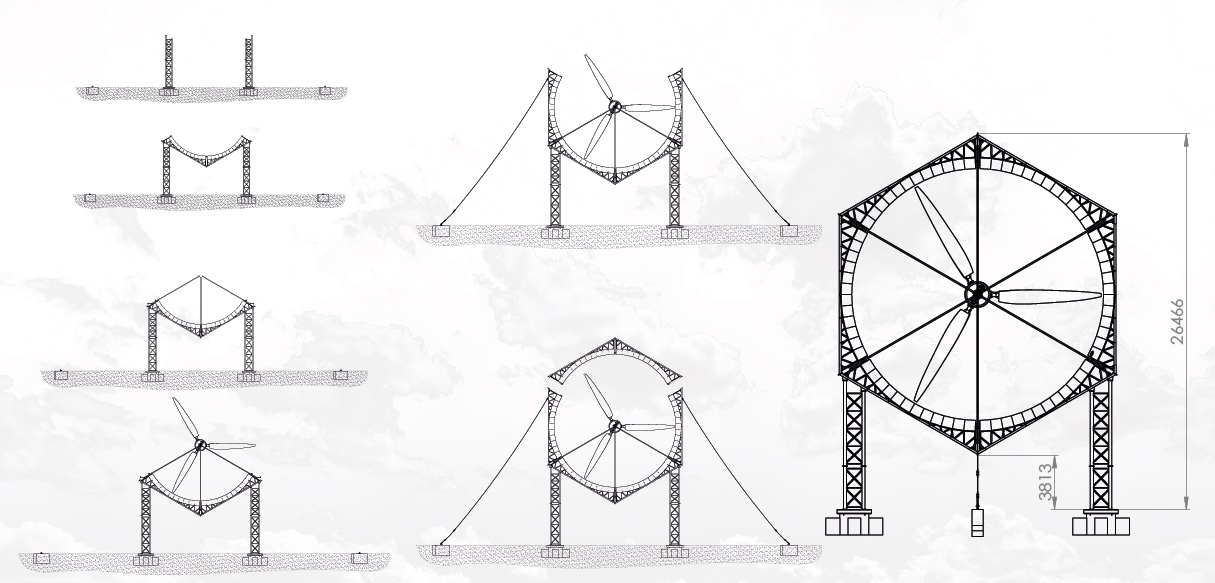 |
| Example hill installation | Module assembly |
Up to 60 years in operation
Due to its design, the WindNext module is designed to last up to 60 years with scheduled maintenance.
WindNext as an addition to existing wind farms
WindNext modules enable expanding the use of existing wind farms by installing additional modules at the base of the wind farm and using the lower wind area.
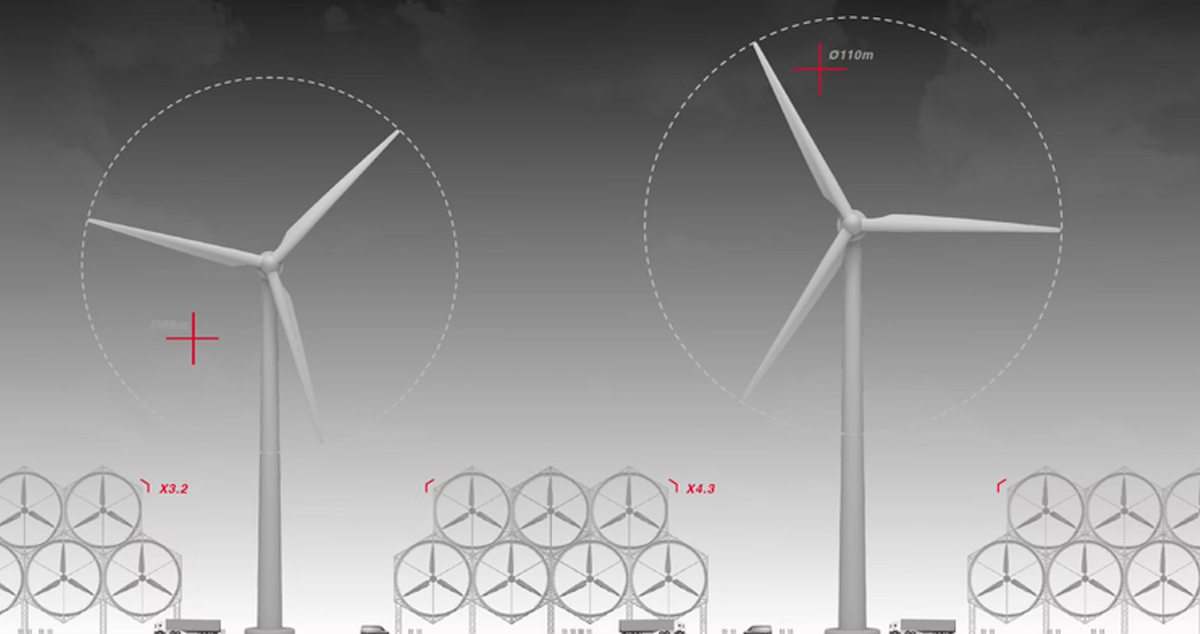
One of WindNext’s first pilot projects is in fact an expansion of an existing wind farm.
Ultra efficient design
WindNext modules combine three different effects to maximize the yield of the module:
- The shroud is designed to enhance the jet effect
- Multi-rotor proximity effect means that more rotors together increase the yield to each
- Angle effect causes the wind blowing from a +-30 degrees angle to increase the yield by up to 35%
 |
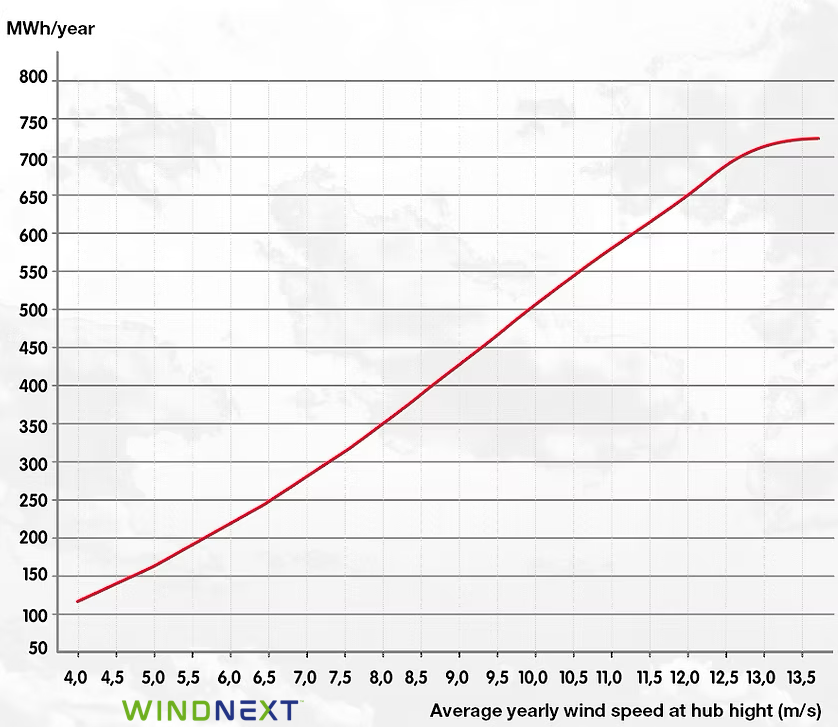 |
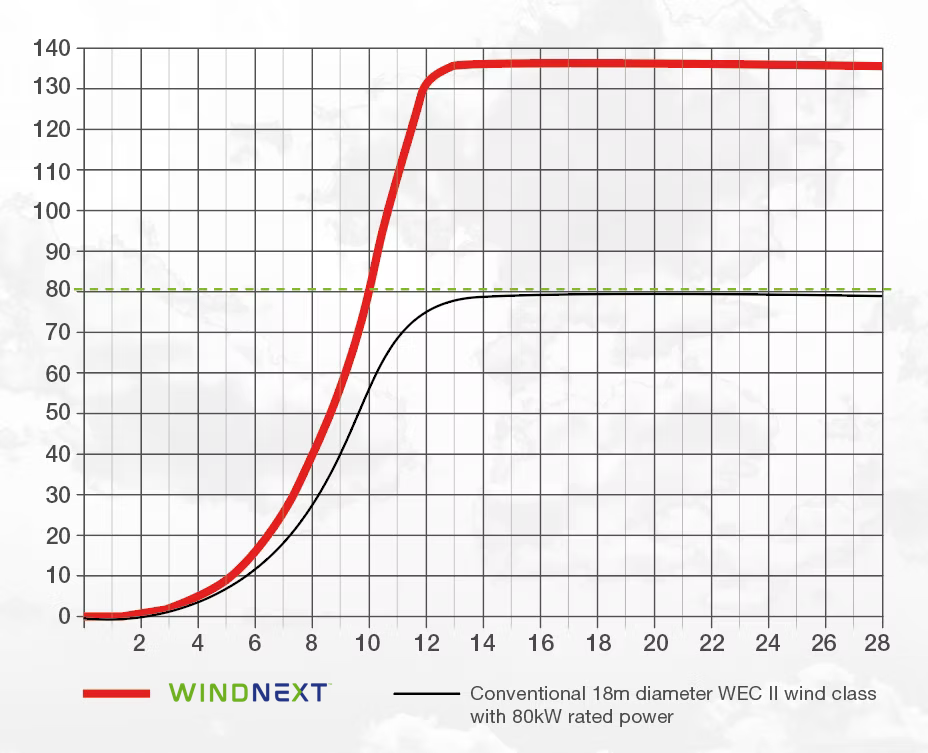 |
| Efficiency | Power curve | Yield |
100% recyclable
Everything except the electrical subsystem on WindNext modules is manufactured out of durable aluminium and galvanised steel. That means that the WindNext module is fully recycleable after the end of the service period - unlike traditional fiberglass blades.

